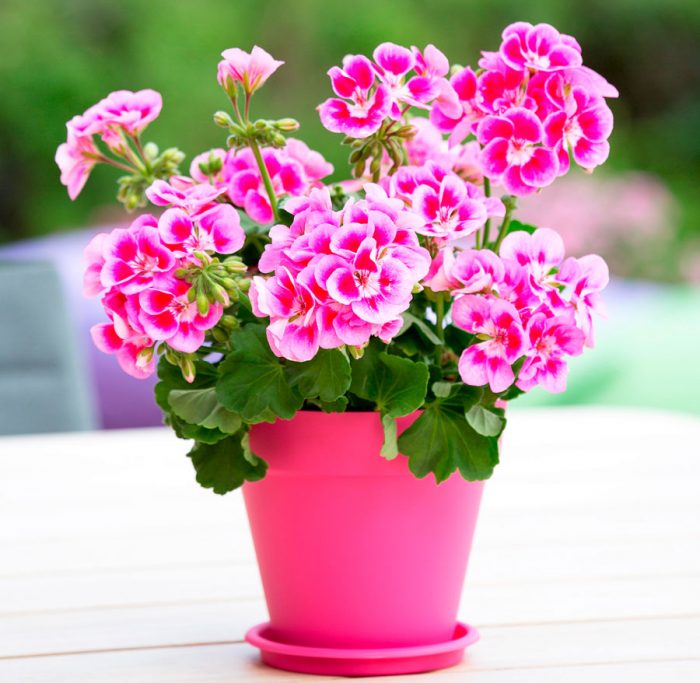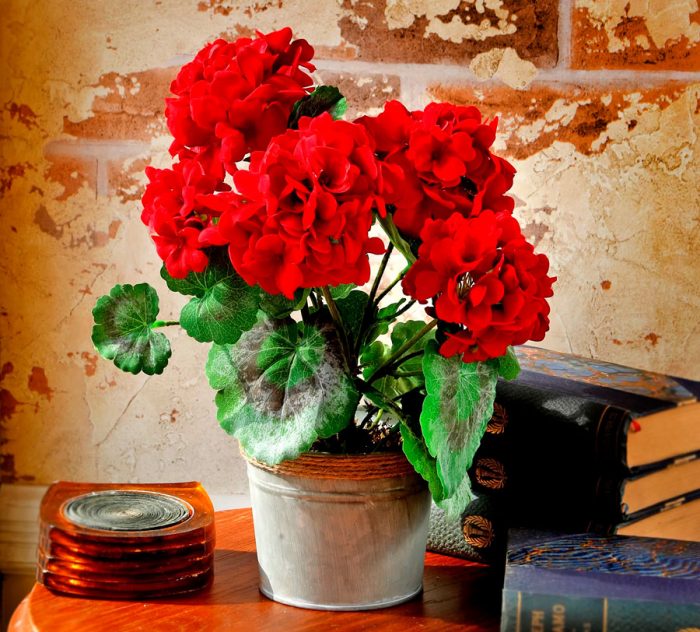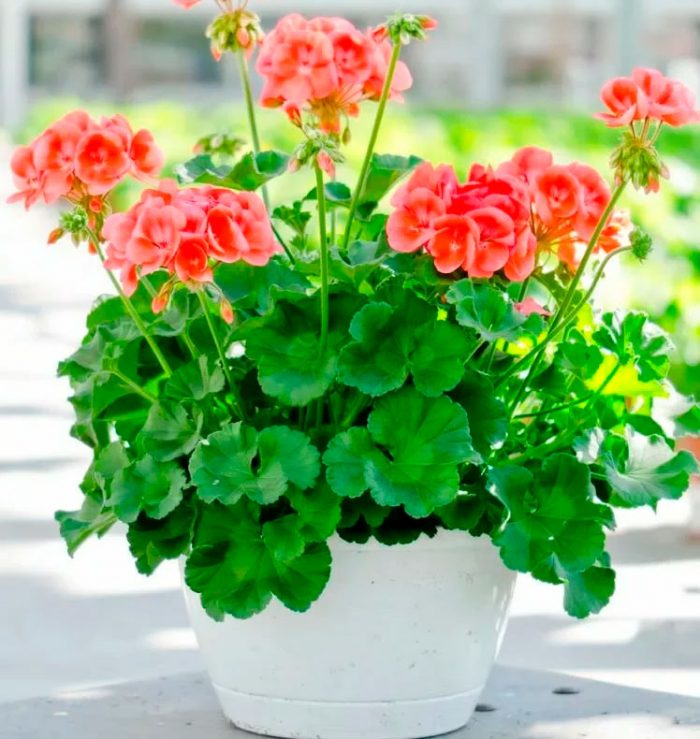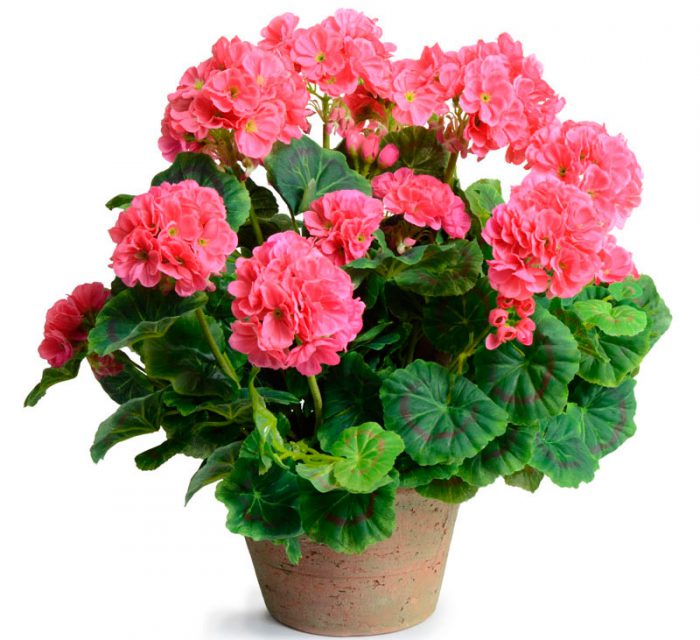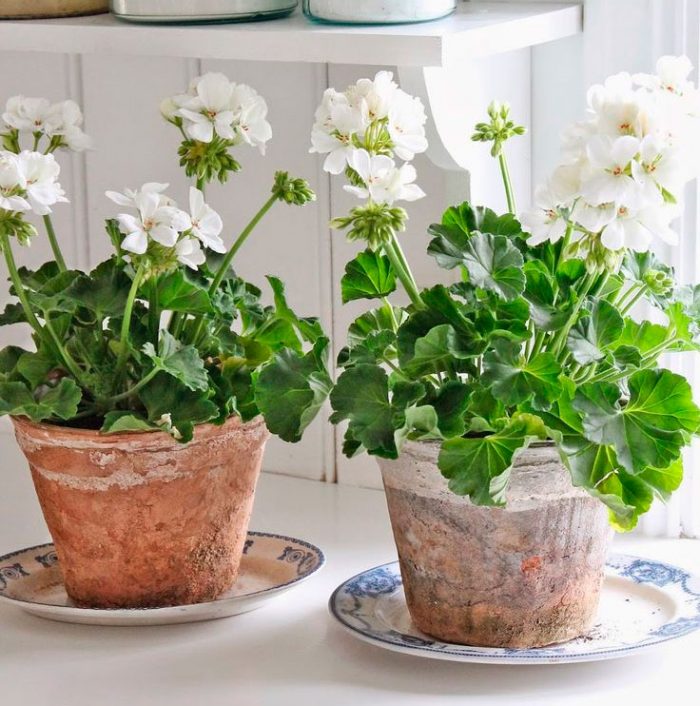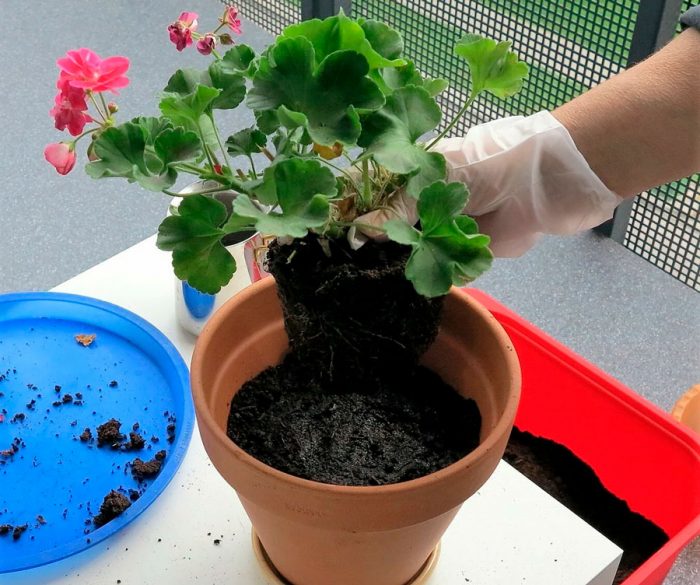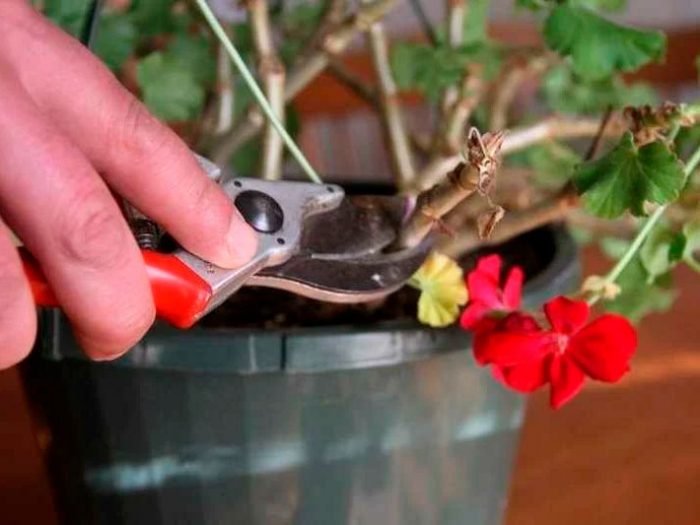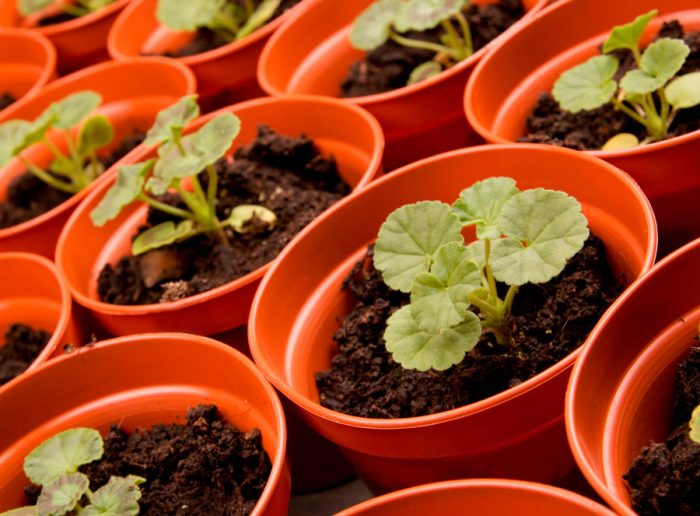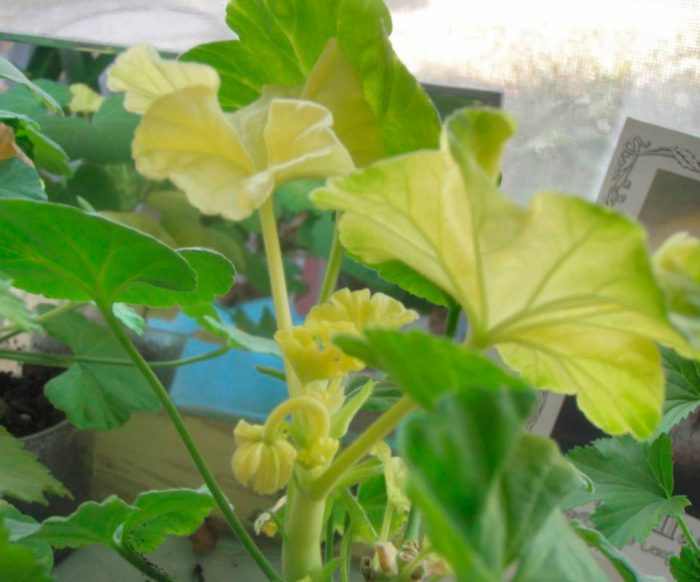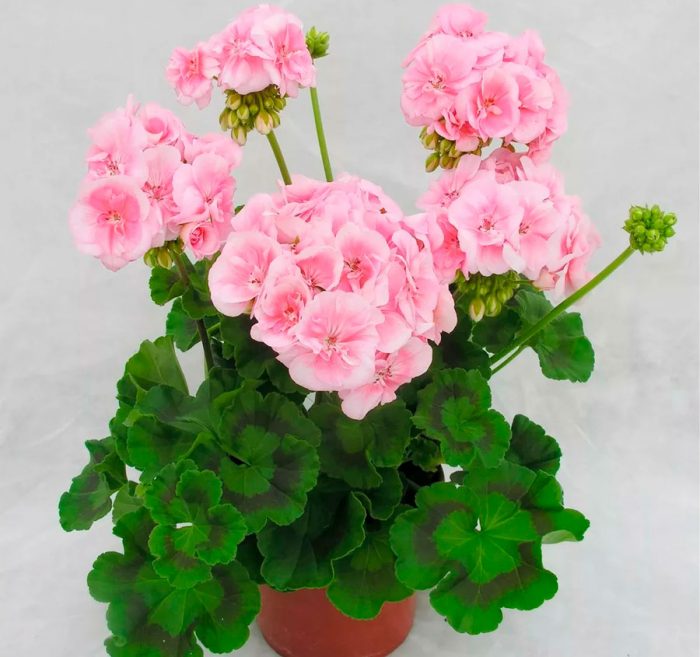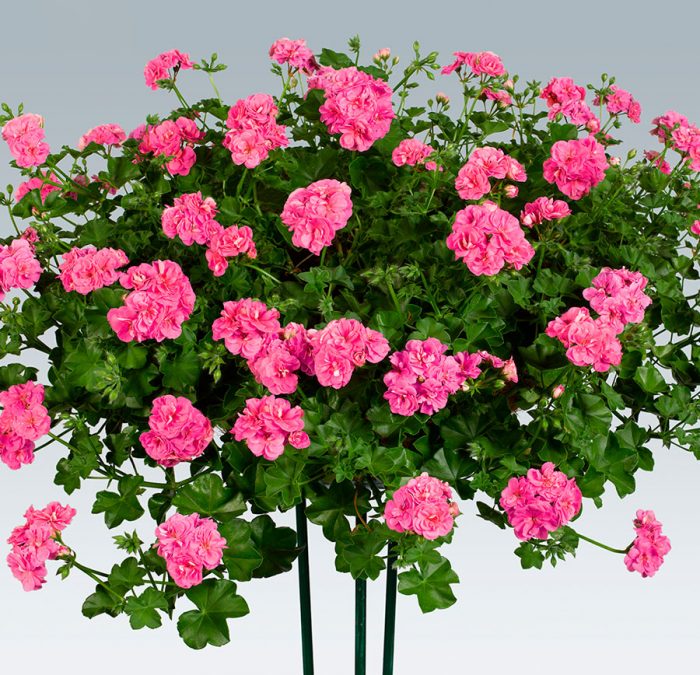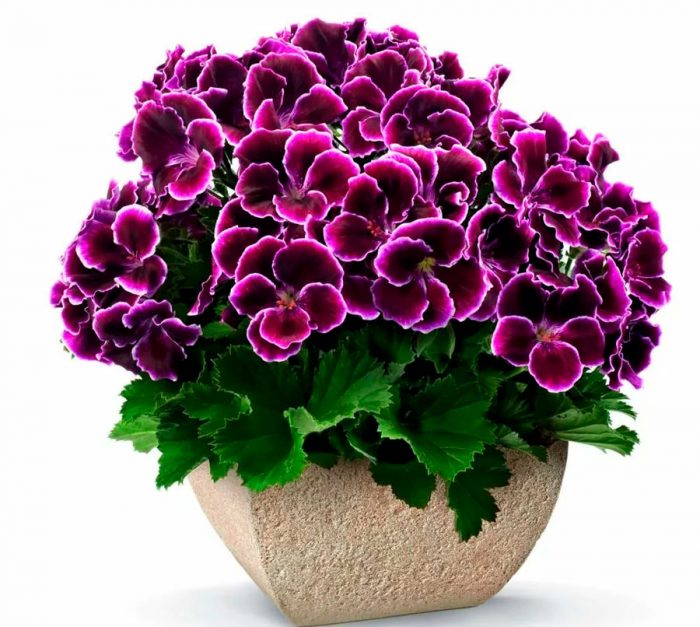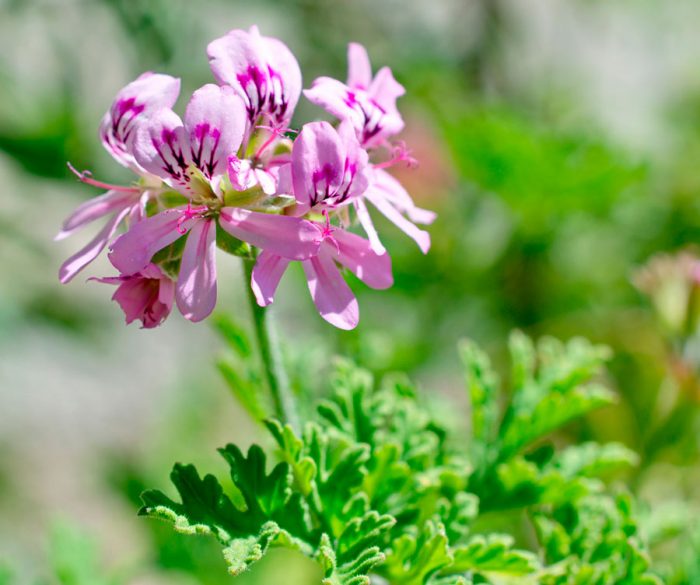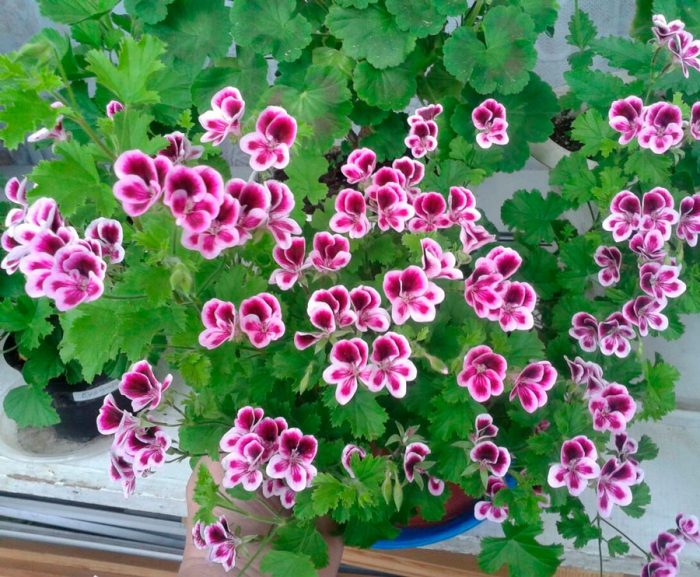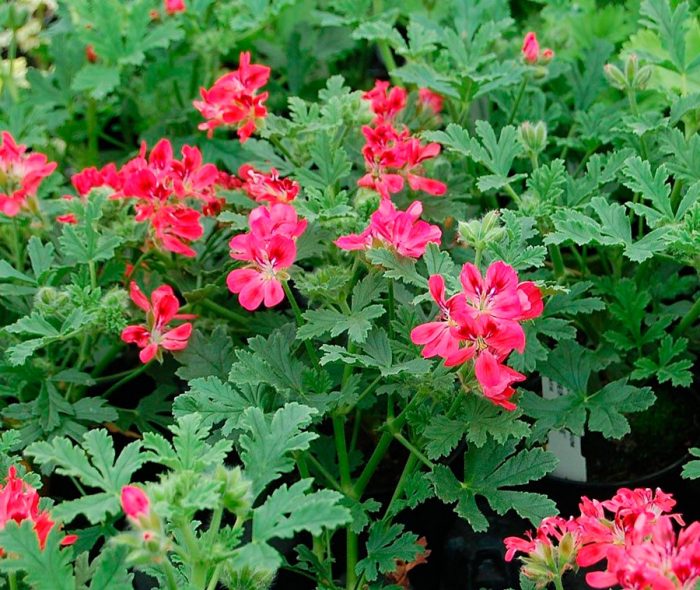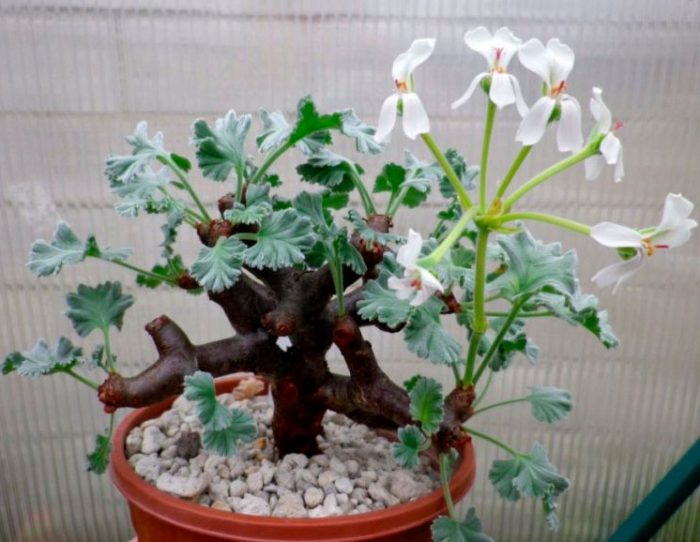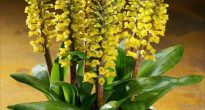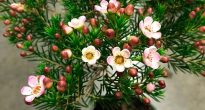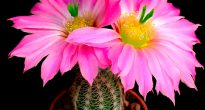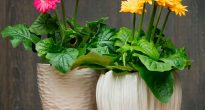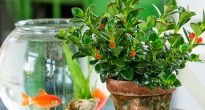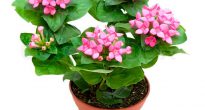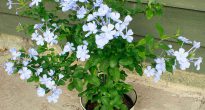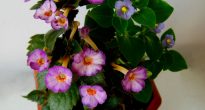Few flower growers know that it is quite possible to grow geranium (pelargonium) with inflorescences of various shades and aromas in indoor conditions. Geranium grafting will help you with this, thanks to which you can feel like a real creator.
Only absolutely healthy young geranium bushes can be used for grafting. And it is best to carry out this procedure in the spring. As a basis, you can take any strong pelargonium bush, the age of which must be at least 1 year. Cut off the top of the strong stem, then make a check-mark cut in it about 20 mm. Install the scion cuttings, which are prepared in advance, into the resulting cut. Pay attention to the fact that the scion and rootstock sections must be in very tight contact with each other. The vaccination site must be fixed with a soft woolen thread or a piece of plastic wrap. A transparent plastic bag should be put on top of the bush. It will be possible to understand whether the vaccination was successful or not after one week.
Content
Brief description of cultivation
- Bloom... Geraniums are able to bloom throughout the year.
- Illumination... It needs a lot of bright light, so a sill with a south orientation is perfect for a flower.
- Temperature regime... During the growing season, the flower grows normally at normal room temperature. In this case, during the rest period, the air temperature should be about 15 degrees.
- Watering... During the growing season, the bush is provided with abundant watering, and it is carried out immediately after the top layer of the substrate in the pot dries. In winter, the plant is not watered.
- Air humidity... It grows normally at the same level of air humidity that is typical for residential premises.
- Fertilizer... Geraniums are fed from the last days of March to the second half of November twice a month, using for this a complex mineral fertilizer for flowering indoor plants.
- Dormant period... From late November to early spring days.
- Transfer... The procedure is carried out only if necessary, when the root system becomes very crowded in the pot. A transplant is recommended at the beginning of the growing season.
- Pruning... It is held every autumn. To do this, you must shorten all the stems so that 6 or 7 leaf plates remain on them.
- Pinching... It is recommended to pinch all shoots over the fourth or fifth leaf plate.
- Reproduction... Seeds and cuttings.
- Pests... Whiteflies, aphids and spider mites.
- Diseases... Botrytis, leaf blight, bacteriosis, black rot, rust, root rot and viruses.
The plant Pelargonium (Pelargonium) is part of the Geranium family and is native to South Africa. This genus unites about 400 forms and species of pelargonium, and among them there are both annuals and perennials. In European countries, geraniums began to be grown in the late 15th century or early 16th century. Blooming geranium, or pelargonium is related to common geranium and meadow geranium. Those species that are cultivated at home were combined by specialists under the general name "indoor geranium".
Features of growing room geranium
Indoor geranium is quite popular among flower growers. The fact is that it is distinguished by long and spectacular flowering, and also undemanding to care and growing conditions. However, there are several rules that an inexperienced florist must know who decides to decorate his house with pelargonium, namely:
- In winter, the flower prefers to be in a cool place. But it should be remembered that the temperature in the room should not drop below 10 degrees.
- The plant needs a lot of sunlight, which is why it feels best on a south-facing windowsill.
- Since pelargonium is native to South Africa, with enough light and nutrients, it can bloom all year round.
- To make the bush more lush and branched, do not forget to pinch the shoots in a timely manner.
- Don't forget to prune wilted buds.
- Almost all types and varieties of pelargonium need systematic pruning.
Home care for geraniums
Fundamental rules
It is not difficult to grow pelargonium indoors. In order for the bush to bloom magnificently, and not to build up green mass, a moderately fertile substrate must be used for planting it. During planting or transplanting, do not forget to make a thick layer of drainage at the bottom of the container; for this it is recommended to use large expanded clay. Watering should be abundant, it is carried out after the top layer of the soil mixture dries up. In winter, the flower is rarely watered.
It is not necessary to moisten geranium foliage from a sprayer, because it reacts best to dry fresh air. That is why experienced experts recommend moving the bush to the balcony in the summer. The plant needs a lot of sunlight, while the direct rays of the sun only benefit it, not harm it. However, on hot summer days at noon, it is still recommended to shade the flower from the direct rays of the sun.
In the warm season, the flower feels normal at almost any air temperature. At the same time, in winter, it is recommended to put the bush in a cool place (around 15 degrees).
Top dressing
It is necessary to feed indoor geraniums once every 15 days (from the last days of March to mid-November). And for this they use liquid fertilizers.
An iodine solution is excellent for feeding pelargonium. To prepare it, combine 1 liter of water and one drop of iodine. For 1 bush, take 50 milligrams of solution, and it is poured into the pot very carefully along the walls. Do not overdo it with iodine solution, as this can cause the root system to burn out in the flower. Thanks to such fertilization, the flowering of pelargonium will be long and lush. Remember that you cannot feed the flower with fresh organic fertilizer.
Geranium transplant
Indoor geraniums are difficult to transfer, which is recommended only when absolutely necessary. For example, you need to transplant a bush if its roots stick out of the drainage holes.
The beginning of the growing season of geranium occurs in early spring, and it is at this time that experts advise whether to transplant or plant it. Please note that the new pot should be about 20 millimeters larger than the old one.If the capacity is very large, because of this, the green mass will actively grow to the detriment of flowering.
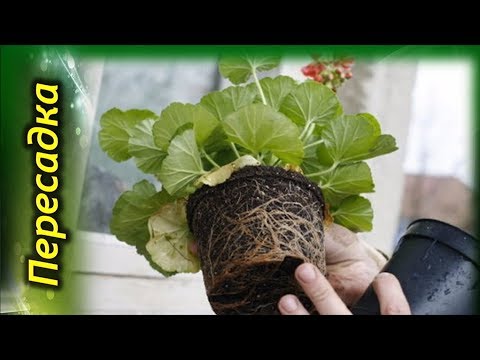

Watch this video on YouTube
Pruning
Pelargonium pruning is carried out in the autumn. To do this, each shoot is shortened so that 6 or 7 leaf plates remain on it. Cut out any stems that grow from the axils of the leaves, not from the root. In the event that during the winter the bush has grown very strongly again, it is again pruned, while only a few buds should remain on the shoots. The remaining cut off shoots, if desired, can be rooted and planted in separate pots.
To make the bush more lush, branched and bloom profusely, do not forget to pinch the shoots over the fourth or fifth leaf plate. In December and January, cutting geraniums is highly undesirable.
Reproduction methods
Growing from seeds
Indoor geraniums can be grown from seeds. Seeds purchased in a specialized store have a high germination rate and give amicable shoots. It is undesirable to collect seed material with your own hands from your flowers. The fact is that the seeds collected from hybrid varieties are not able to preserve the varietal characteristics of the parent plant.
For sowing seeds, use a moist and loose soil mixture consisting of sand, peat and turf soil (1: 1: 2). On top of the seed, sprinkle with a layer of sand or the same substrate, while its thickness should be about 25 mm. Crops are watered from a spray bottle, and the container is covered with a transparent film or glass on top. In order to prevent the development of the "black leg", disinfect the soil mixture in advance by spilling it with a solution of pink manganese potassium. Do not forget to systematically water the crops and remove condensation from the shelter. The optimum air temperature for the emergence of seedlings is from 18 to 22 degrees.
After the first seedlings appear, remove the shelter, and transfer the crops to a well-lit and cool (from 16 to 20 degrees) place. After 6-8 weeks, two or three true leaf plates will form at the seedlings. At this time, it is recommended to unpack them in separate pots. After 5 or 6 leaves are formed on the bush, it is recommended to pinch the shoot so that the bush is more lush.
Cuttings
Cuttings can be harvested at any time of the year, but spring is best suited for this. The length of the segments can vary from 5 to 7 centimeters, and each of them should have 2 or 3 sheet plates.
Cut cuttings are left in the fresh air for 24 hours so that they have time to dry well. Treat the cut site with charcoal crushed to a powdery state, after which the cuttings are planted in a small pot filled with a loose substrate. Often sand is used to root sections of geranium. In this case, it is recommended to keep it a little damp at all times. When watering, be careful not to get water on the shoots and foliage, as this can cause rot. You don't need to cover the cuttings on top. After the roots grow in the segments, they are transplanted into permanent pots. Note that cuttings root best at 20 to 22 degrees.


Watch this video on YouTube
Diseases and pests of geranium
Diseases
Geranium is highly resistant to disease. However, she can still get sick, and most often this is due to improper care.
Sometimes it happens that the leg of a young bush turns black (black rot). It is impossible to cure a diseased plant. Therefore, it is burned, and the substrate is disinfected or thrown away. In order to prevent the development of root, black and gray rot, do not allow moisture to stagnate in the substrate.
Pests
Whiteflies, ticks or aphids can settle on the flower. If you find aphids or ticks on the bush, then rinse its foliage with an infusion of tobacco or chamomile mixed with green soap as soon as possible, paying special attention to the seamy surface of the plates. Wait two to three hours and rinse the bush with clean water.
To save geranium from whitefly, it should be sprayed alternately with solutions of the following drugs: Confidor, Fufanon, Bison and Actellik. The fact is that it is rather difficult to exterminate adults and larvae of the whitefly.


Watch this video on YouTube
Why does geranium turn yellow
Yellowing of pelargonium foliage can be observed for several reasons:
- yellowing and drying of the edges of the leaf plates means that the bush needs watering;
- if the foliage turns yellow, and the bush itself is sluggish, it means that liquid constantly stagnates in the soil mixture;
- yellowing of the bush and dropping of the lower foliage is associated with poor lighting;
- the root system is cramped in the pot;
- the bush was recently transplanted or moved to another location.
Why geranium does not bloom
As a rule, pelargonium refuses to bloom for the following reasons:
- the room is cold or the bush lacks sunlight, to correct the situation, supplement it with fluorescent lamps;
- there are too many nutrients in the substrate (it is recommended to purchase a special soil mixture for geraniums for the flower, and you can also make it yourself according to a special recipe, which is described above);
- overly large pot;
- the bush is pruned irregularly (thanks to pruning, geranium grows lush and blooms profusely);
- untimely feeding.


Watch this video on YouTube
Why does geranium dry
If only the tips of the leaf plates dry up in the bush, this means that it needs watering. Rust can cause the bush to dry out. When this fungal disease is affected, brownish-red specks first form on the foliage, and then it dries up and flies around. Treat the bush with a Bordeaux mixture solution (5%). Instead, you can carry out two treatments with Fitosporin with a break of 1-1.5 weeks.
Types and varieties of geraniums with photos and names
Geranium zonale (Pelargonium zonale)
It is also called kalachik. This type is most common in indoor culture. The height of the bush is from 0.3 to 0.6 m, but it can reach 1 m. On its dark green foliage there are concentric circles. Ball-shaped umbrellas consist of double or simple flowers, which can be painted in raspberry, pink, red or white.
Geranium ivy, or thyroid (Pelargonium peltatum)
This ampelous geranium is planted in hanging flowerpots. Its fragile dangling stems can be about 1 meter long. They are decorated with brushes consisting of semi-double, simple or double flowers of various colors.
Royal geranium (Pelargonium grandiflorum)
This species has a large number of shapes, varieties and colors. There are specimens with variegated foliage, and also with double or simple flowers. The bush reaches a height of about 50 cm. The flowers on the lower petals have a dark speck or stripes along the veins.
Scented Geraniums (Pelargonium graveolens)
Such a bush can have the aroma of lemon, almond, pepper, lemon balm, mint, ginger, pineapple, strawberry, coconut or pine needles. You can feel it just by touching the foliage. The plant is used to obtain geranium oil, which is used in the medical, cosmetic and food industries. Small flowers are purple or pale pink.
Geranium Angels
During flowering, the bush is decorated with hanging dense inflorescences, consisting of flowers similar to pansies. Indoor bush about 30 cm high.
Unique
This hybrid plant is created by crossing the royal and brilliant geraniums. The foliage is heavily dissected and it has a spicy scent. Highly decorative inflorescences are similar to royal geranium flowers.
Succulent geraniums
There are ten species, among which there are specimens both with thorns and without them. The plant has unusual curved shoots, which makes it look like a miniature baobab. It is often used to create bonsai.
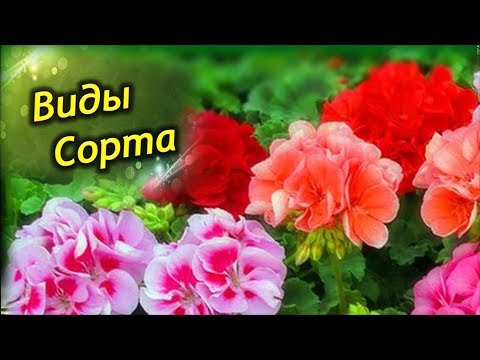

Watch this video on YouTube

